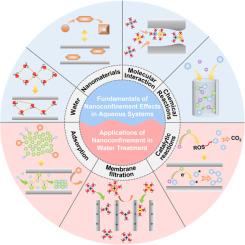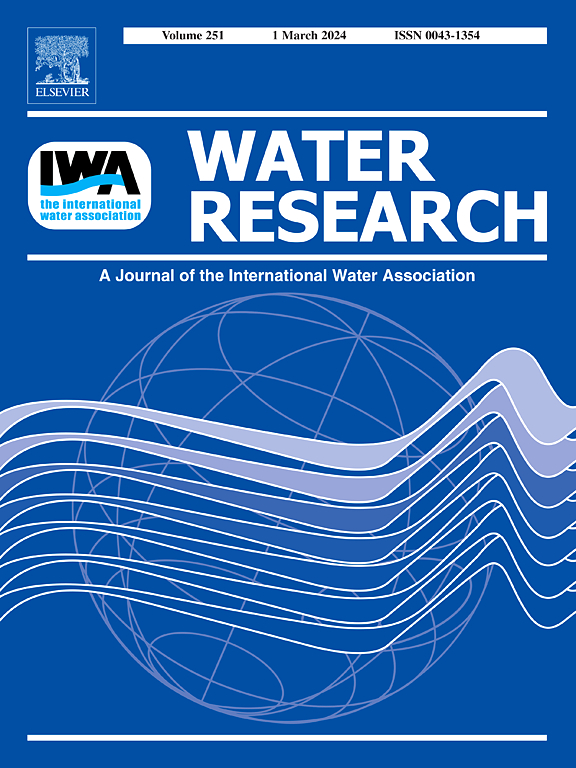Chemistry for Water Treatment under Nanoconfinement
IF 11.4
1区 环境科学与生态学
Q1 ENGINEERING, ENVIRONMENTAL
引用次数: 0
Abstract
The global freshwater crisis, exacerbated by escalating pollution, poses a significant threat to human health. Addressing this challenge required innovative strategies to develop highly efficient and process-adaptable materials for water decontamination. In this regard, nanomaterials with confinement structures have emerged as a promising solution, outperforming traditional nanomaterials in terms of efficiency, selectivity, stability, and process adaptability, thereby serving as an ideal platform for designing novel functional materials for sustainable water treatment. This Review focuses on recent advancements and employment of nanoconfinement effects in various water treatment processes, emphasizing the fundamental chemistry underlying nanoconfinement effects. Also, the existing knowledge gaps related to nanoconfinement effects and future prospects for expanding their applications in diverse water treatment scenarios are discussed.

纳米约束下水处理的化学研究
全球淡水危机因不断升级的污染而加剧,对人类健康构成重大威胁。解决这一挑战需要创新的策略来开发高效和工艺适应性强的水净化材料。在这方面,具有约束结构的纳米材料已经成为一种很有前途的解决方案,在效率、选择性、稳定性和工艺适应性方面优于传统的纳米材料,从而成为设计用于可持续水处理的新型功能材料的理想平台。本文综述了纳米约束效应在各种水处理工艺中的最新进展和应用,强调了纳米约束效应的基本化学基础。此外,还讨论了纳米约束效应的现有知识差距以及在各种水处理场景中扩大其应用的未来前景。
本文章由计算机程序翻译,如有差异,请以英文原文为准。
求助全文
约1分钟内获得全文
求助全文
来源期刊

Water Research
环境科学-工程:环境
CiteScore
20.80
自引率
9.40%
发文量
1307
审稿时长
38 days
期刊介绍:
Water Research, along with its open access companion journal Water Research X, serves as a platform for publishing original research papers covering various aspects of the science and technology related to the anthropogenic water cycle, water quality, and its management worldwide. The audience targeted by the journal comprises biologists, chemical engineers, chemists, civil engineers, environmental engineers, limnologists, and microbiologists. The scope of the journal include:
•Treatment processes for water and wastewaters (municipal, agricultural, industrial, and on-site treatment), including resource recovery and residuals management;
•Urban hydrology including sewer systems, stormwater management, and green infrastructure;
•Drinking water treatment and distribution;
•Potable and non-potable water reuse;
•Sanitation, public health, and risk assessment;
•Anaerobic digestion, solid and hazardous waste management, including source characterization and the effects and control of leachates and gaseous emissions;
•Contaminants (chemical, microbial, anthropogenic particles such as nanoparticles or microplastics) and related water quality sensing, monitoring, fate, and assessment;
•Anthropogenic impacts on inland, tidal, coastal and urban waters, focusing on surface and ground waters, and point and non-point sources of pollution;
•Environmental restoration, linked to surface water, groundwater and groundwater remediation;
•Analysis of the interfaces between sediments and water, and between water and atmosphere, focusing specifically on anthropogenic impacts;
•Mathematical modelling, systems analysis, machine learning, and beneficial use of big data related to the anthropogenic water cycle;
•Socio-economic, policy, and regulations studies.
 求助内容:
求助内容: 应助结果提醒方式:
应助结果提醒方式:


